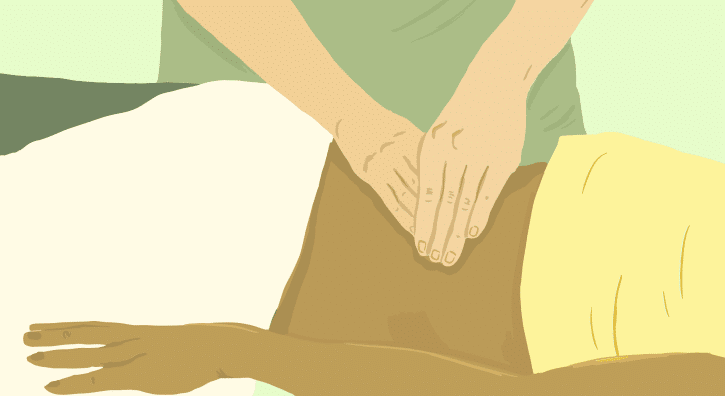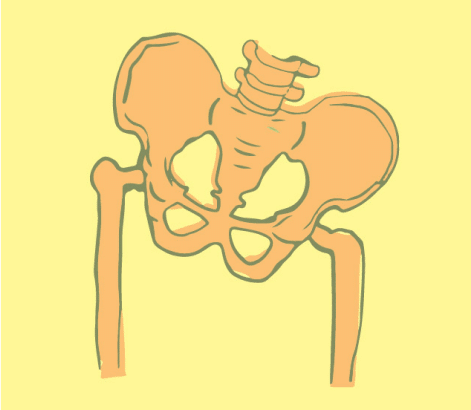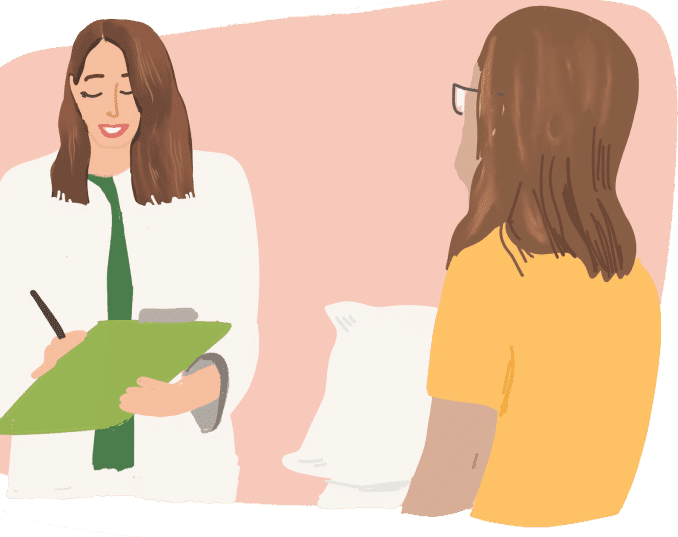

Symptoms
- Discomfort in the vulva, vagina, anus, or perineum—including itching, burning, and aching—is commonly associated with pelvic pain
- This pain may lead to problems during sexual intercourse, heightened sensitivity to clothing, and difficulty sitting comfortably
- Workouts or even moderate physical exertion can make the symptoms more severe
- Many women also face urinary issues, such as needing to urinate urgently or often, painful urination, and involuntary leakage
- Bowel and gastrointestinal problems like bloating, cramps, or constipation are sometimes reported
- Symptoms may be triggered by things like intercourse or tampon insertion, or arise seemingly on their own
- Some women experience these symptoms constantly, while others notice they come and go

Symptoms
- Discomfort in the vulva, vagina, anus, or perineum—including itching, burning, and aching—is commonly associated with pelvic pain
- This pain may lead to problems during sexual intercourse, heightened sensitivity to clothing, and difficulty sitting comfortably
- Workouts or even moderate physical exertion can make the symptoms more severe
- Many women also face urinary issues, such as needing to urinate urgently or often, painful urination, and involuntary leakage
- Bowel and gastrointestinal problems like bloating, cramps, or constipation are sometimes reported
- Symptoms may be triggered by things like intercourse or tampon insertion, or arise seemingly on their own
- Some women experience these symptoms constantly, while others notice they come and go

Associated Diagnoses
Diagnoses such as Endometriosis, Vulvodynia, Interstitial Cystitis/Painful Bladder Syndrome, Pudendal Neuralgia, Lichen Sclerosus, Lichen Planus, and Irritable Bowel Syndrome are associated with pelvic pain and pelvic floor dysfunction.


Causes of Pelvic Pain
- Repetitive vaginal and/or bladder infections and/or gynecologic, urologic, dermatologic or gastrointestinal conditions
- The majority of women with pelvic pain have pelvic floor dysfunction
- Prescription medications such as oral contraceptives, acne medications, and hormonal suppressive therapies for diseases such as Endometriosis and Polycystic Ovarian Syndrome (PCOS)
- Surgical trauma (childbirth, pelvic organ prolapse repair, hysterectomy)
- Orthopedic injuries or traumas
- Biomechanical or structural dysfunction (hip dysfunction, sacro-iliac joint dysfunction, piriformis syndrome, scoliosis, leg length discrepancy)
- Vaginal childbirth
- Menopause
- Genital cutting or genital mutilation
Symptoms
- Repetitive vaginal and/or bladder infections and/or gynecologic, urologic, dermatologic or gastrointestinal conditions
- The majority of women with pelvic pain have pelvic floor dysfunction
- Prescription medications such as oral contraceptives, acne medications, and hormonal suppressive therapies for diseases such as Endometriosis and Polycystic Ovarian Syndrome (PCOS)
- Surgical trauma (childbirth, pelvic organ prolapse repair, hysterectomy)
- Orthopedic injuries or traumas
- Biomechanical or structural dysfunction (hip dysfunction, sacro-iliac joint dysfunction, piriformis syndrome, scoliosis, leg length discrepancy)
- Vaginal childbirth
- Menopause
- Genital cutting or genital mutilation

Diagnostic Challenges
Many women in Carlsbad struggling with persistent pelvic pain have found themselves enduring years of frustration before receiving an accurate diagnosis. On average, it takes up to five years, and for those with Endometriosis, sometimes more than a decade. These delays occur because pelvic floor dysfunction can masquerade as various infections—UTIs, yeast infections, or STIs—causing both patients and providers to miss the real issue. Diagnostic tests often come back clear, adding to the confusion. It’s common to hear from women who say they had never even heard of the pelvic floor until they sought out specialized physical and occupational therapy and finally found answers.
Diagnostic Challenges
Many women in Carlsbad struggling with persistent pelvic pain have found themselves enduring years of frustration before receiving an accurate diagnosis. On average, it takes up to five years, and for those with Endometriosis, sometimes more than a decade. These delays occur because pelvic floor dysfunction can masquerade as various infections—UTIs, yeast infections, or STIs—causing both patients and providers to miss the real issue. Diagnostic tests often come back clear, adding to the confusion. It’s common to hear from women who say they had never even heard of the pelvic floor until they sought out specialized physical and occupational therapy and finally found answers.
Treatment:
How We Can Help You

In Carlsbad, many women dealing with pelvic pain may not realize that specialized help is available. A pelvic floor physical and occupational therapy evaluation can be a turning point in your recovery. During this first visit, your therapist will review your complete health history, previous diagnoses, and what treatment paths you’ve already explored—along with what has or hasn’t worked. We understand that many Carlsbad women who walk through our doors have already been through a difficult and frustrating journey. The physical exam includes a hands-on evaluation of pelvic muscles, soft tissue, joint function, and nerve involvement, along with movement analysis. Your therapist will then explain what’s going on in your body and outline a personalized care plan that includes both short- and long-term goals. Most women begin treatment at a frequency of one to two times per week for about 12 weeks, along with at-home exercises to reinforce progress. We also coordinate with your broader medical team. Our goal is to help you feel like yourself again.

Treatment:
How We Can Help You
In Carlsbad, many women dealing with pelvic pain may not realize that specialized help is available. A pelvic floor physical and occupational therapy evaluation can be a turning point in your recovery. During this first visit, your therapist will review your complete health history, previous diagnoses, and what treatment paths you’ve already explored—along with what has or hasn’t worked. We understand that many Carlsbad women who walk through our doors have already been through a difficult and frustrating journey. The physical exam includes a hands-on evaluation of pelvic muscles, soft tissue, joint function, and nerve involvement, along with movement analysis. Your therapist will then explain what’s going on in your body and outline a personalized care plan that includes both short- and long-term goals. Most women begin treatment at a frequency of one to two times per week for about 12 weeks, along with at-home exercises to reinforce progress. We also coordinate with your broader medical team. Our goal is to help you feel like yourself again.
How Can We Help You?
If you have any comments or questions, please complete the form below. Including your email address is necessary so we can get back to you. We respect your privacy and will keep all submitted information confidential.

Join The Newsletter. Win a copy of our book, “Pelvic Pain Explained!”
We love getting to know our website visitors. Please tell us a little bit about yourself and get the latest info via PHRC e-newsletter!
*Subscribers automatically eligible to win our book, “Pelvic Pain Explained.”
At its essence, Pelvic Pain Explained is a narrative that traces the onset of pelvic pain, the diagnostic and therapeutic hurdles faced along the way, the complexity of evaluating various treatment approaches, and the profound influence this largely invisible illness has on a patient’s emotional and relational world.


